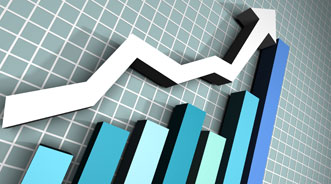Consumer Sentiment Falls to Lowest Level Since ’09

By subscribing, you agree to receive communications from Auto Remarketing and our partners in accordance with our Privacy Policy. We may share your information with select partners and sponsors who may contact you about their products and services. You may unsubscribe at any time.
YONKERS, N.Y. –
Consumer sentiment and confidence in the economy fell to its lowest level since 2009 and registered the sharpest drop in two years as debt ceiling debate turmoil in Washington revealed the realities of a weak economy, according to August’s Consumer Reports Index.
Though most numbers regarding the automotive segment remained even with July, used-vehicle purchases for August might see a slight downturn.
For this segment, the Consumer Reports Retail Index, which measures consumer purchases in the past 30 days as well as the outlook for planned purchases in the next 30 days, noted that the level of purchases were stagnant last month, reflecting July activity that remained unchanged for new-car purchases at 3.0 percent and used cars at 5.1 percent.
In a bit of bad news for remarketers, predicted future purchases for used cars in the next 30 days came in at 3.4 percent versus 3.8 percent in July, according to the report.
Moving on to the economy as a whole, representing the percentage of people saying they were financially better off this month than they were a year ago, the index fell to 43.4 percent, down from 48.5 percent in July and also well below 44.7 percent reported a year ago.
"The debt ceiling debate in Washington focused the consumer’s attention fully on the dire state of the economy, leaving many in a dispirited mood," said Ed Farrell, director of the Consumer Reports National Research Center.
Subscribe to Auto Remarketing to stay informed and stay ahead.
By subscribing, you agree to receive communications from Auto Remarketing and our partners in accordance with our Privacy Policy. We may share your information with select partners and sponsors who may contact you about their products and services. You may unsubscribe at any time.
"Americans are facing real financial difficulties due to weak employment, which is a key impediment to an economic recovery. This is reflected in nearly every measure of the consumer’s experience,” he continued.
Consumer Reports also found that of the more optimistic consumers, ages 18–34, and those with households with income of $100,000 or more, 53.3 and 54.4 percent reported financial improvement from last year, respectively.
On the other hand, of the most pessimistic consumers: households with income less than $50,000 (38.9 percent) and those who are ages 65 and older (32.8 percent), reported improvement.
Additionally, each demographic group still showed marked decreases in overall sentiment compared with July, according to the company.
Moreover, the Consumer Reports Trouble Tracker — a gauge of the breadth and depth of financial difficulties among American households — climbed 10 points from last month to 60.6, up from 56.6 during August of last year.
This trend reflects “financial difficulties pertaining to health care and an inability to pay mortgages and other bills,” officials noted.
According to officials, lower-income households, earning less than $50,000 a year, have been disproportionately affected.
In the past 30 days: 25.2 percent of this demographic were unable to afford medical bills or medications; 15.8 percent missed payment on a major bill (not a mortgage); 12.9 percent lost or had reduced health-care coverage and 8.2 percent had negative changes to credit-card terms, according to the report.
Continuing on, as more jobs were lost than created, the Employment Index fell from July’s 50.8 percent to 49.0, its lowest level since March 2010 and the biggest month-over-month decline seen since August 2009.
In the report, 5.1 percent of consumers said they started a new job in the past 30 days, compared with 7.2 percent that lost their job in the same period.
"The Consumer Reports Index shows no clear signs pointing to an economic recovery any time soon," Farrell said.
"Too many households are feeling financial pain and more jobs were lost than created. Unfortunately, the burden of this bad economy has fallen on the households that earn less than $50,000 a year. They’re the ones having trouble finding new jobs, paying bills and affording health care,” he stressed.
Also illustrating consumer displeasure, the Consumer Reports Stress Index, which measures attitudes regarding the amount of stress consumers feel compared to a year ago, rose to its highest level in 16 months to 63.6 percent. This was also up sharply from 59.4 percent in July.
On the other hand, recent and planned spending were the only measures to see an uptick in August, but “they were rebounding from feeble levels in July,” according to company officials.
The Consumer Reports Retail Index for August came in as 12 percent for past spending, up from 10.2 in July, and 9.03 percent for planned spending, up from 7.7 last month.
Representing one of the few bright spots in the index, reports show that the month’s improvements from July to August stemmed from gains in small appliances (22.0 percent up from 15.9 percent), major home electronics (13.3 percent up from 10.1 percent) and personal electronics (22.8 percent up from 20.6 percent).
Consumer Reports also noted that the discouragement among consumers spanned the entire country, however, the North Central States, South and Western regions showed the greatest rise in financial difficulties.


